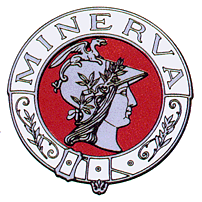Mr. Walter Grew was taken on to manage the Enfield Cycle Company's new motor department at the end of 1898. The company continued producing bicycles, and motorized tricicles and quadricycles in 1899 with some modifications with respect to the previous year model. Otherwise the year was largely uneventful, except for one thing.
 Towards the end of the year, as had been a tradition for a while, the Stanley Show took place. Royal Enfield displayed its tricicles and quadricycles, so did Ariel and other manufacturers. The Ariel tricycles were made under license from De Dion Bouton in France, and the Enfield ones had De Dion Bouton engines. At the time the prevalent belief in the UK industry was that a two wheeled vehicle was too unstable to carry the unwieldy and heavy engines of the day. Singer had explored a bit building a motorcycle with the engine inside the wheel. Such design (without a clutch!) was later taken over by the German Megola in the 1920's. To give an idea of what it was to ride one of these vehicles, the instruction manual of the Megola advised the rider who approached a traffic light "to orbit it" until it turns green, since there was no way to stop without killing the engine!. It wasn't a terrible surprise that such designs didn't gain a lot of acceptance with the public. There were also the Werner cycles with a front engine that drove the front wheel but although they were around since 1897 in the Continent they hadn't had much impact in England by 1899 yet apparently. They were rumored to be prone to side-slip due to the high center of gravity of the front mounted engine.
Towards the end of the year, as had been a tradition for a while, the Stanley Show took place. Royal Enfield displayed its tricicles and quadricycles, so did Ariel and other manufacturers. The Ariel tricycles were made under license from De Dion Bouton in France, and the Enfield ones had De Dion Bouton engines. At the time the prevalent belief in the UK industry was that a two wheeled vehicle was too unstable to carry the unwieldy and heavy engines of the day. Singer had explored a bit building a motorcycle with the engine inside the wheel. Such design (without a clutch!) was later taken over by the German Megola in the 1920's. To give an idea of what it was to ride one of these vehicles, the instruction manual of the Megola advised the rider who approached a traffic light "to orbit it" until it turns green, since there was no way to stop without killing the engine!. It wasn't a terrible surprise that such designs didn't gain a lot of acceptance with the public. There were also the Werner cycles with a front engine that drove the front wheel but although they were around since 1897 in the Continent they hadn't had much impact in England by 1899 yet apparently. They were rumored to be prone to side-slip due to the high center of gravity of the front mounted engine.
 All that was about to change at the Stanley Show: there was a new entrant from Belgium, Minerva. They had small light engines clamped on the front downtube of bicycles. Apparently having the bikes there for everyone to see was a game-changer: The Minerva caused quite an impression and bicycle makers in the UK started strapping Minerva engines to their bicycles. Royal Enfield was not going to be an exception. Some claim that at that show the creation of the British motorcycle industry took place.
All that was about to change at the Stanley Show: there was a new entrant from Belgium, Minerva. They had small light engines clamped on the front downtube of bicycles. Apparently having the bikes there for everyone to see was a game-changer: The Minerva caused quite an impression and bicycle makers in the UK started strapping Minerva engines to their bicycles. Royal Enfield was not going to be an exception. Some claim that at that show the creation of the British motorcycle industry took place.
(Reference: The cycle industry: its origin, history and latest developments By W. F. Grew, available online).

No comments:
Post a Comment